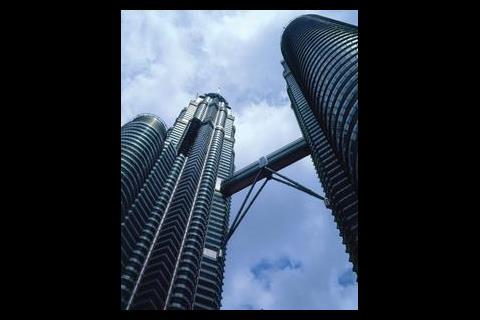It wasn't until Elisha Graves Otis demonstrated the first safety freight elevator in 1853 that public confidence grew in this mode of transport. This design was powered by steam and provided with a safety system to prevent the lift falling to the ground should the cable fail.
The rest is now history, with lifts fulfilling almost every conceivable role, from transporting occupants to the 50th floor of a skyscraper to delivering cars to automated parking garages several storeys below ground.
Despite this history and the confidence in lift design demonstrated by both members of the public, who now barely give the lift they travel in a second thought, and building code legislators, the use of lifts has not extended to the evacuation of a building in an emergency.
While we have managed to whizz occupants to the top of our high-rise buildings in a matter of minutes, the established practice for allowing them back down in an emergency situation is to descend hundreds, if not thousands, of steps. This process could take hours rather than minutes. Given the haste required in an emergency, is it reasonable for occupants to spend longer getting out of a building than they did to get in?
For the most part, the established codes of practice for building design across the world still expect most occupants to walk down the staircase, while the lifts are rendered inoperable and sent back to the main reception lobby. It has long been recognised worldwide though, that the evacuation of disabled occupants, mainly the mobility impaired, may be difficult under certain circumstances. Provision has been made in some buildings for means of escape via lifts with dual power supplies.
Hong Kong leads the way in the use of lifts for general evacuation. Their Building code of practice on the means of escape in case of fire was amended in 1996 to incorporate the use of evacuation lifts, departing from a refuge floor when the building is in excess of 80 storeys. This is the first time that such a provision has been written into a design guide rather than simply being applied by fire engineers as a bespoke solution.
There is one completely stair free building in the UK. The British Telecommunications Tower in London, constructed in the 1960s, is provided solely with access via two high speed passenger/freight lifts each originally designed to carry 15 persons. Special parliamentary legislation was even passed to permit such a departure from the rigid building codes of the time.
Apart from this occasion in the 1960s a lift evacuation approach has not been approved for a building in the UK. It is highly unlikely that a design team would be able to convince the building legislators to accept a lift only solution for a high occupancy office or public building. Even lower occupancy residential buildings, where only a single flat is presumed to evacuate, are unlikely to be staircase free in the immediate future given the high reliance on lift maintenance and the requirement to provide multiple lifts.
It is necessary to find an alternative approach – perhaps one that combines evacuation lifts and protected staircases. The problem lies in the requirement to protect the occupants while they escape. Under most codes of practice the occupants descend protected staircases, separated from the remainder of the building by fire rated construction and protected from the egress of smoke by protected lobbies, smoke ventilation or pressurisation.
The end result is a safe egress route for the occupants, which while time consuming, is unlikely to be blocked or rendered ineffective. The same could not be said of the standard lift. This may become inoperable because of fire damage to the power supply or conditions in the shaft which may become intolerable by the infiltration of smoke and other combustion products, such as hydrogen cyanide.
To prevent such events occurring and rendering the evacuation system useless, careful consideration needs to be given to both the protection of the evacuation lifts and the provision of redundancy in the system. The most common method of achieving this is to provide staircase evacuation from the office floor levels to refuge floors located at regular intervals – as advocated in the Hong Kong building code. These floors are protected from the effects of the fire by smoke control and the fire rated construction, giving occupants a safe place where they can decide either to wait for the evacuation lifts or continue by foot.
Taking refuge
These refuge floors should not be used as office accommodation and therefore could have a large cost implication. However they can be used as conference or meeting rooms and viewing gallery facilities.
Refuge floors have been used in one of the world's tallest buildings – the Petronas Towers in Kuala Lumpur. This 452 m high building comprises of two towers, each 88 storeys in height, linked on the 41st and 42nd floors by a 52 m long sky bridge and transfer area. Access to this transfer area is provided in each tower by 29 double-decker passenger lifts, each capable of transporting up to 26 people.
Escape from the upper levels of the tower is facilitated by two means of escape staircases that lead directly to the sky bridge. This place of safety, separated by compartment construction and pressurised to prevent the egress of smoke, allows occupants to either escape into the adjacent tower, continue via the pressurised staircases or evacuate the building via the express lifts. The use of these lifts would not affect the fire services ability to gain access to the building as two independent fire-fighting lifts are provided.
Currently, UK buildings do not reach the heights of Far Eastern and American high-rises. It is therefore unlikely that the provision of fire refuge floors would be a relevant or an economical use of space in the majority of these buildings. However other options are available.
The latest fire engineering knowledge can be used to calculate the flow and movement of people on the floor of fire origin, as well as the likely times before untenable conditions on the fire floor level are reached. By using this information it may be possible to utilise the lifts as additional means of escape routes, minimising the required size of the staircase or even maximising the distance between staircases. Estimates can be made regarding the number of people required to be evacuated via the lifts and facilities, such as lift lobbies or reception areas, could be upgraded to provide a safe enclosure in which occupants could wait.
Intelligent lift systems, which send cars to particular floors depending on the needs, are already in use in this country. In a fire situation these systems could be converted to send lifts to the floors requiring immediate evacuation.
The provision of evacuation lifts in a building could increase its level of safety and flexibility. With careful consideration it could also allow the reduction in both the size and number of staircases permitting more net-lettable area. All that's involved is using the same means of transport that takes a person from the main lobby to their chosen floor, back to the main lobby under emergency conditions, now how difficult can that really be?
Source
Building Sustainable Design
Postscript
Miller Hannah, and Gary Daniels are principals with Hoare Lea Fire Engineering; Simon Russett is principal with Hoare Lea Lifts.






















No comments yet